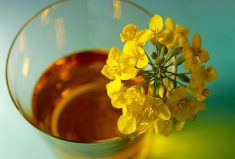A new application for smart phones will allow people in British Columbia to easily report invasive weeds so that they can be identified, tracked and controlled.
The Report-a-Weed app is a free download to iPhone and Android phones that allows users to submit reports of invasive plant sightings, upload photos and browse a list of invasive species.
“I think it’s going to be of use to all of us in British Columbia because it’s a tool where more people can be providing current information on the distribution of invasive plants, particularly for new ones, because if they’re new, we’ll be able to stop them before they get established,” said Gail Wallin, executive director of the Invasive Species Council of B.C.
Read Also

Canada lifts several import tariffs on U.S. goods as talks continue
Starting September 1, Canada will adjust its tariffs on agricultural products, consumer goods and machinery, Prime Minister Mark Carney announced at a press conference in Ottawa on Friday.
The council developed the application, with the help of Hipwood Digital and the provincial ministry of forests, lands and natural resources.
Users can search a list of 202 invasive plants by common name, Latin name or flower colour, or scroll through a photo library of known invasive plants.
Wallin said interest and knowledge about invasive plants is growing in the province, and the new phone app will likely expand public knowledge about invasive, non-native plants that can displace native flora and cause environmental damage.
If used as she hopes, “we’ll have a much better idea how many invasive plants we have and how far they are distributed.”
Once a photo is uploaded, the application logs the location and the photo is reviewed to ensure proper identification. After that, Wallin said action would depend on location and distribution of the plant.
Among the most intrusive plants targeted by the council are orange and yellow hawkweed, garlic mustard, cordgrasses and knotweed. Other targeted species are knapweed, giant hogweed, black henbane, blueweed, common tansy, tansy ragwort, hoary alyssum, field scabious, leafy spurge, purple loosestrife and Scotch broom.
The iPhone version of the app is available through iTunes. The Android version is available through Google.

















